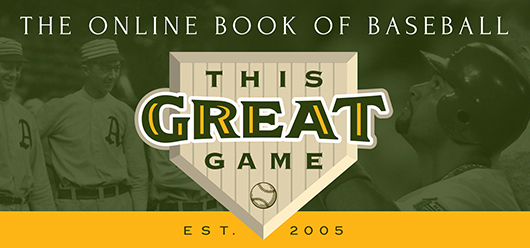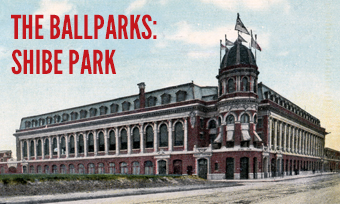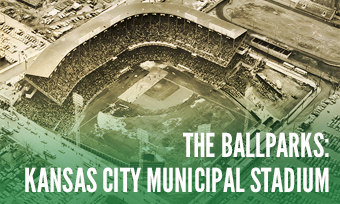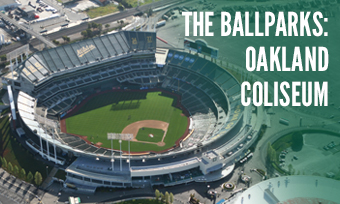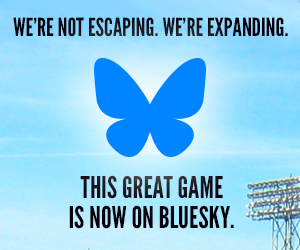THE TEAMS
The Athletics
Known as the Philadelphia Athletics, 1901-54; Kansas City Athletics, 1955-67; Oakland Athletics, 1968-2024
THE A’s BY THE DECADE
The 1900s
Based in Philadelphia, the A’s became one of the American League’s early successes under the trusty and temperate guidance of manager Connie Mack, who chucked away his uniform for a three-piece suit in the dugout. Harry Davis ruled as an early deadball era “slugger” and the pitching was dominated by the consistent Eddie Plank and colorful, unpredictable Rube Waddell. The A’s won two pennants during the decade, which ended with a move into 20,000-seat Shibe Park—baseball’s first steel-and-concrete ballpark.
The 1910s
It was a tale of two decades for the A’s. The first half was a dynastic effort in which the team won four pennants and their first three World Series thanks to the presence of the “$100,000 Infield” consisting of Eddie Collins, Frank “Home Run” Baker, Stuffy McInnis and Jack Barry. But Mack, now the team’s co-owner, became fearful of spiraling salaries and economic hard times and unloaded his star talent overnight after the 1914 season, plunging the A’s into the cellar for the balance of the decade—bottoming out in 1916 with the AL’s worst-ever record of 36-117.
The 1920s
The aftershocks of Mack’s first major selloff continued into the 1920s, but the A’s gradually migrated from the second division with the flowering of a second wave of talent led by muscular slugger Jimmie Foxx, tough-as-nails batting crown contender Al Simmons, astute catcher Mickey Cochrane and southpaw ace Lefty Grove, who would come to dominate the AL through the 1930s. The new and improved A’s reached their peak in 1929 with the first of three consecutive AL titles—and two straight World Series championships.
The 1930s
The Great Depression hit Mack’s wallet deeply—leaving him no choice but to clean house for the second time in 20 years. The A’s latest dynasty was torn down over more time than the first, but it was painfully evident that the franchise was once again headed into a long-term abyss. Slugger Bob Johnson did the best he could to keep the A’s watchable for the few that bothered to show up at Shibe Park, but the pitching was atrocious and the team shuffled between seventh and eighth (last) place throughout the final half of the decade.
The 1940s
An aging Mack, by now a figurehead in the dugout as younger coaches increasingly took over tactical control of the games, witnessed a franchise slipping into irrelevancy; not even World War II, which shook up baseball’s power balance and determined contenders with the luck of the military draft, could buoy the A’s briefly toward the top. After the war, the A’s made a rare and brief run to respectability, finishing just above .500 from 1947-49 with a patient and resistant lineup that specialized in drawing walks and getting hit by pitches.
The 1950s
Mack managed for the 50th and last time in 1950 at age 87, stepping full-time into the owner’s office until a family feud forced the sale of the franchise. New lord Arnold Johnson left two-team Philadelphia in 1955 and moved the A’s to Kansas City, where the team continued as a perennial pretender and was often joked to be the top farm club for the powerhouse New York Yankees—based on the many one-sided deals that sent Roger Maris, Ralph Terry and many others from Missouri to Gotham.
The 1960s
Johnson suffered a fatal heart attack in 1960, and the A’s were soon sold to tempestuous insurance magnate Charles O. Finley, the ultimate salesman who never listened to anyone but himself and held brash, bold thoughts on how to shake up the game. Cosmetically, he spiced up the A’s uniforms with a unique Kelly green-and-gold color scheme in 1963, but the team remained awful as he publicly threatened to move the team out of Kansas City—getting his wish in 1968 when he relocated to Oakland, finishing a 13-year existence in Missouri during which the A’s never had a winning record.
The 1970s
Finley finally built a winner with a cast of mustached characters (including Hall of Famers Reggie Jackson, Catfish Hunter and Rollie Fingers) that matched his flamboyant and turbulent personality, as the A’s won five straight AL West titles and, from 1972-74, became the first team other than the Yankees to win three straight World Series titles. But Finley attacked the advent of free agency and attempted to sell off his best players as Mack had twice done previously—only to be denied by commissioner and constant adversary Bowie Kuhn. Most of Finley’s stars left as free agents and the A’s were rendered a shell of their former greatness, losing 108 games and drawing only 300,000 fans in 1979 during his last full year of ownership.
The 1980s
In sharp contrast to the penurious Finley, new owner Walter Haas spent freely and aggressively marketed the A’s, mushrooming attendance totals in Oakland. All this, while the team remained ensconced in mediocrity save for an early flirtation with the postseason thanks to a workhorse pitching staff and the speedy, record-breaking Rickey Henderson. Late in the decade, a new powerhouse emerged through a succession of top rookies (including “Bash Brothers” Jose Canseco and Mark McGwire) and reinvented pitchers Dave Stewart and Dennis Eckersley, who transformed from nomads to All-Stars under the stewardship of manager Tony La Russa. The A’s finished the 1980s with an earthquake-marred championship over cross-bay rival San Francisco.
The 1990s
After winning their third straight AL pennant in 1990, the A’s faded from annual contention as age and general devolution hit their star players. When Haas died in 1995, a new regime came in and slashed payroll—quickly affecting performance on the field; the team suffered six straight losing campaigns in the middle of the decade, and blindly became labeled a small-market franchise even though it was within one of the country’s largest population centers.
The 2000s
Responding to the team’s economic challenges, young general manager (and former A’s player) Billy Beane became a master at building contenders with pennies, relying more on statistical sabermetrics over traditional scouting. Under his watch, the A’s—powered by MVPs Jason Giambi and Miguel Tejada as well as their “Big Three” starting pitchers (Tim Hudson, Barry Zito and Mark Mulder)—put together eight straight winning seasons and five playoff appearances, but developed a nasty habit of failing to close out postseason series when advancement was well within their grasp.
The 2010s
Continually handicapped with low budgets and an aging, outmoded Oakland Coliseum that they desperately sought to abandon, Beane & Co. continued to work wonders in producing overachieving results on a relative shoestring. Though the A’s did plateau with three consecutive last-place finishes, they otherwise played competitive ball and then some, earning five postseason appearances behind a combination of rising stars and reclamation projects that perfectly fit their M.O.
The 2020s
The ebb and flow of the A’s penurious ways were compounded by the team’s increasing desire to escape the Coliseum. A proposed Oakland waterfront ballpark looked promising, but team officials lost patience with what they perceived as snail-pace process on the project and made the startling move to abandon Oakland—first to nearby Sacramento, then ultimately to a new ballpark on the Las Vegas Strip. All the while, the A’s completely decimated a competitive roster and lost 100-plus games in back-to-back seasons (2022-23).
Highlights of the A’s History on This Great Game:
 1911: The Legend of Home Run Baker Frank Baker famously powers the Philadelphia Athletics past an aggressive New York Giant squad in the World Series.
1911: The Legend of Home Run Baker Frank Baker famously powers the Philadelphia Athletics past an aggressive New York Giant squad in the World Series.
 1915: The Great Connie Mack Fire Sale Sensing bad vibes and bad finances, A’s manager Connie Mack tears apart his first dynasty.
1915: The Great Connie Mack Fire Sale Sensing bad vibes and bad finances, A’s manager Connie Mack tears apart his first dynasty.
 1929: Running on Ehmke All but washed up, veteran pitcher Howard Ehmke gets the dream call for Game One of the World Series and delivers, setting the tone for a long-overdue championship for the A’s.
1929: Running on Ehmke All but washed up, veteran pitcher Howard Ehmke gets the dream call for Game One of the World Series and delivers, setting the tone for a long-overdue championship for the A’s.
 1971: Dynasty on the Rise After years of constant losing, the colorful Charles Finley finally has a winner with the A’s in Oakland.
1971: Dynasty on the Rise After years of constant losing, the colorful Charles Finley finally has a winner with the A’s in Oakland.
 1989: Of Triumph and Tragedy In a rough year for the game, the local euphoria of a Bay Area World Series between the A’s and San Francisco Giants turns horrific when a major earthquake strikes before Game Three.
1989: Of Triumph and Tragedy In a rough year for the game, the local euphoria of a Bay Area World Series between the A’s and San Francisco Giants turns horrific when a major earthquake strikes before Game Three.

